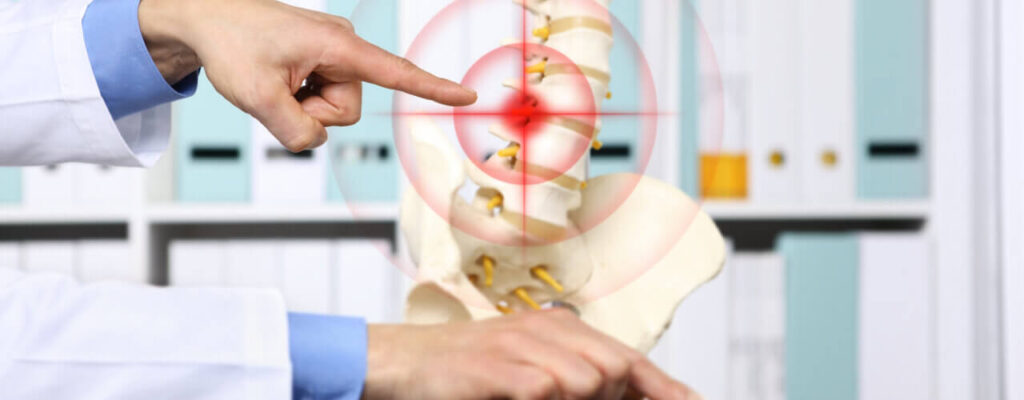Find Relief for Your Herniated Discs!
Back pain is one of the most common complaints among Americans today. Whether you experience the occasional ache in your back, or you deal with recurring chronic back pain, it can make completing everyday tasks extremely difficult. But have you ever stopped to wonder whether your back pain was a sign of a more serious condition?
Strange neck pains, back pains, or extremity symptoms can indicate a variety of potential problems – including one or more herniated discs. The spine is made up of a complex series of individual bones called the vertebrae.
Between each of the vertebrae are cushioning pads that act as shock absorbers, making bending, waling, and generally moving around each day possible without pain. But if these little cushioning discs become injured, the soft center can actually rupture and result in severe pain.
This type of injury is often referred to as a herniated or slipped disc and while there is no cure for the condition, physical therapy can help to manage chronic pain.
Physical therapy and herniated discs
When experiencing back pain, it can be tempting to simply visit your general physician in search of a quick solution. However, in many cases, all that a general physician can offer in the way of pain relief is a prescription for painkillers. Alternatively, an experienced physical therapist can offer a variety of treatment options that are designed to target the root cause of your reoccurring back pain.
Some of the most common treatment options recommended by our physical therapist for herniated disc pain include:
- Ultrasound therapy or electrical muscle stimulation for fast pain relief and deep penetration of the targeted area
- Alternating treatment with ice and heat to reduce inflammation and soothe sore muscles.
- Therapeutic massage to help ease sore muscles
- Aerobic exercises like walking or using a stationary bicycle
- Stretching exercises that help to keep the muscles in the back flexible
What should I know about PT treatment plans?
Physical therapy plays a critical role in recovering from a herniated disc. A physical therapist implements different techniques for pain relief and healing. Passive treatments like deep tissue massage, electric stimulation, and hot and cold therapy are a few examples of passive treatments.
Deep tissue massage uses pressure to relieve spasms and deep muscle tension due to a herniated disc. Hot therapy increases blood flow to the affected area and enhances healing. Cold therapy reduces inflammation. Electric nerve stimulation reduces muscle spasm by sending a tiny electric current to the nerve pathway.
Active treatments by a physical therapist address joint movement, stability, flexibility, strength, and posture. A physical therapist will teach you to core stabilizing exercises to strengthen the back muscles. You’ll also engage in body muscle exercises to strengthen and condition your body. In addition, a physical therapist will teach you flexibility techniques and proper stretching techniques.
Common causes of herniated discs
The vertebrae and cushioning discs in the spinal column can become injured in a variety of different ways. However, when dealing with a herniated disc, injuries are most often the result of:
- Improper lifting resulting in sudden strain
- Work-related or overuse injuries where the spine has been twisted violently
- Excessive weight gain and obesity
- The natural aging process or degeneration
The risks of leaving a herniated disc untreated
In addition to analyzing your symptoms and performing various tests and measures, a physical therapist can help you determine if you have a herniated disc by assessing your medical history and lifestyle. We’ll look for risk factors known to be linked to herniated discs, including:
- Physically demanding occupation
- Frequent bending, heavy lifting, or twisting
- Age between 30 and 50
- Male gender
- Obesity
- Smoking
- Acute trauma, e.g., auto accident or fall
Are you experiencing these symptoms?
Herniated discs are one of the most common back pain complaints. They typically occur in people aged 35 to 55 years but can affect physical therapy patients of all ages. In certain cases, a herniated disc may show no outward symptoms at all. But for those dealing with recurring pain from a herniated disc, the following symptoms are also common:
- Neck spasms affecting the muscles in the neck and shoulder area.
- Neck pain that stays centered in the back and side areas of the neck. This type of pain can increase in severity when bending or turning the neck.
- Pain radiating out from the shoulder, arm, and sometimes traveling down to the hands and fingers.
- Pain in the shoulder blade area.
Get started today
If you have been experiencing recurrent back pain in the neck or shoulder area, you may have a herniated disc. Through the use of targeted treatments and physical therapy exercises, our physical therapist can help you to manage your herniated disc pain and avoid the use of prescription medications or more invasive treatment options.
Contact Dresher Physical Therapy today for more information and to schedule an initial consultation.
Tags: physical therapy, physical therapist, Chronic Pain, health, back pain, wellness, herniated disc, Lower Back Pain



